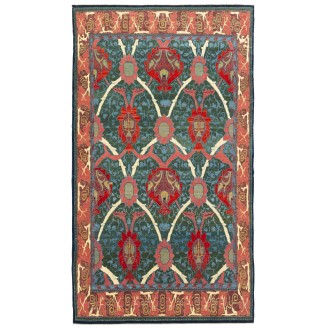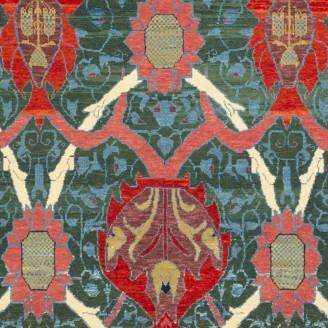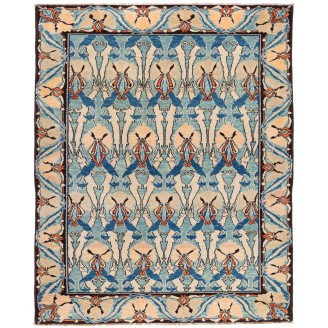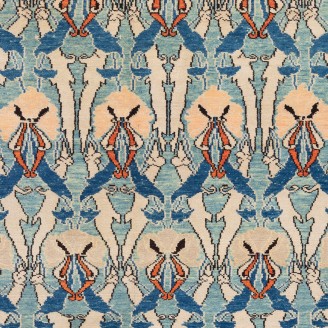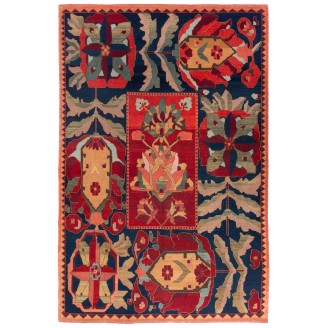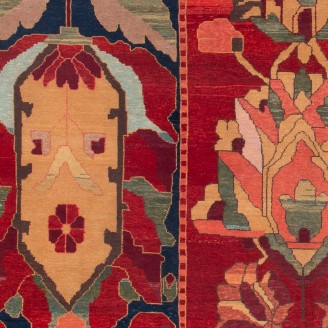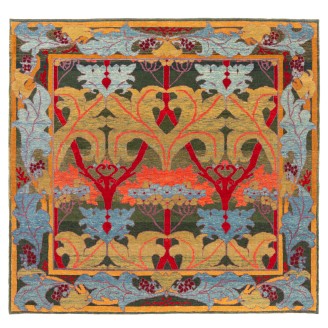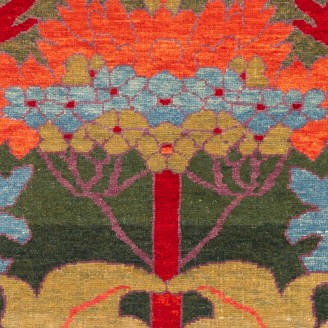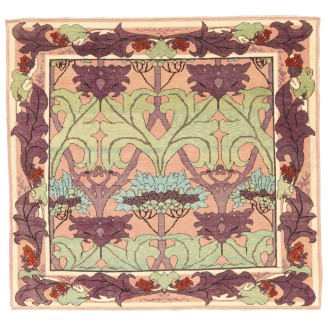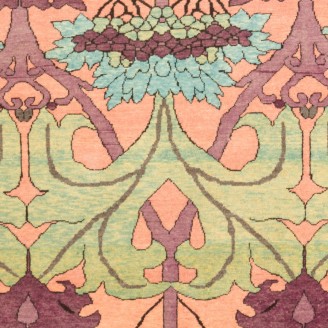William Morris (1834-1898), a founder of the British Arts and Crafts movement, sought to restore the prestige and methods of hand-made crafts, including textiles, in opposition to the 19th-century tendency toward factory-produced textiles. With this goal in mind, he created his workshop and designed dozens of patterns for hand-produced woven and printed cloth, upholstery, carpets, and other textiles.
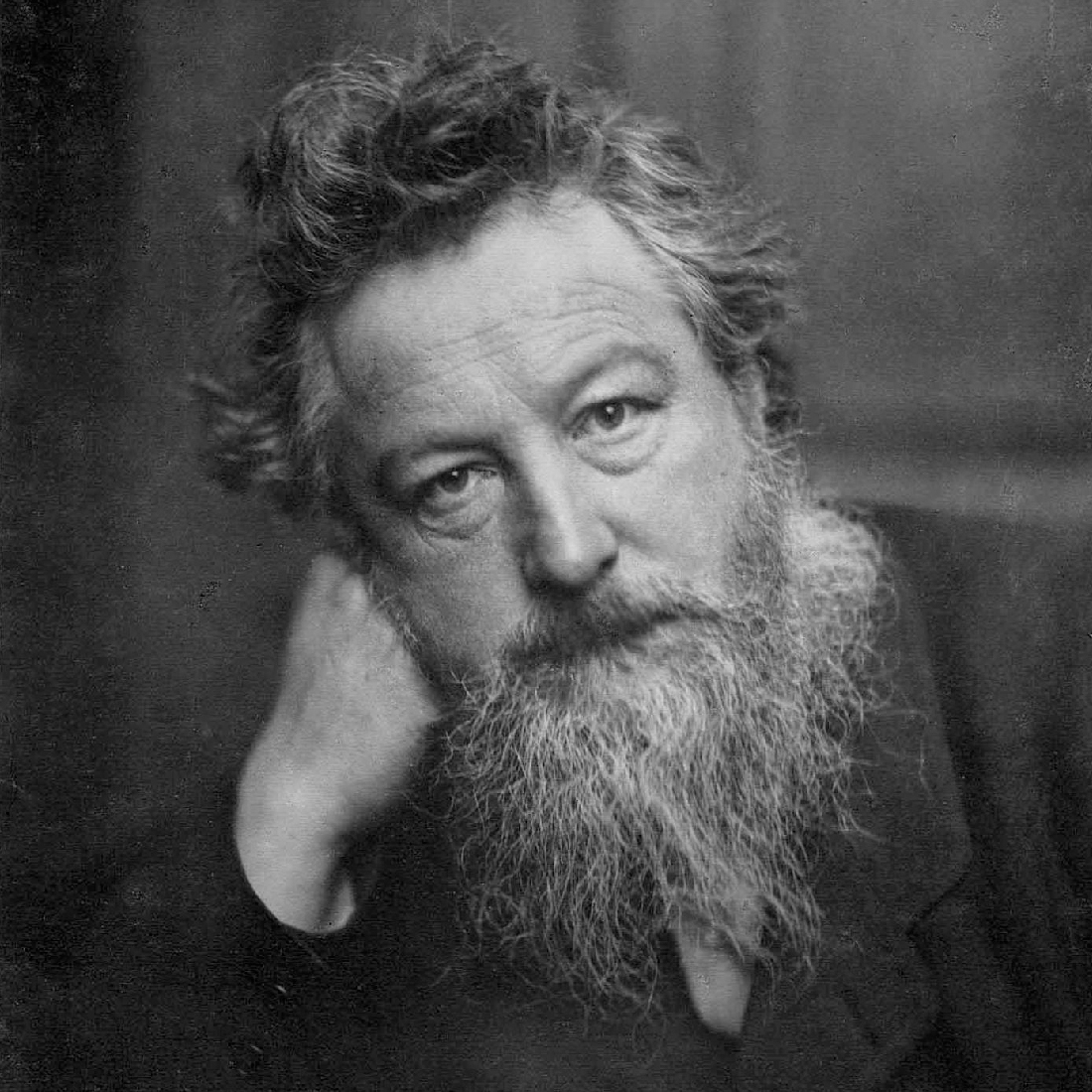 William Morris by Frederick Hollyer, 1887
William Morris by Frederick Hollyer, 1887Many of the carpets he designed used the patterns he had invented for printed fabrics, but others, particularly the Hammersmith carpets, resembled the designs he made for his woven textiles. His early carpets sometimes borrowed popular oriental motifs. His designs for Axminster and Wilton carpets were less lavish in their ornament and more geometrical, making them more affordable. In 1881, he moved the workshop to Merton Abbey, where there was space to weave much larger carpets commissioned by his clients. His designs for these large Hammersmith carpets moved farther away from the Oriental influence and took on a more specifically English style. As with his wallpapers and other textiles, his inspirations were often flowers, plants, and animals found in English gardens. One particularly notable design was the Bullerswood carpet, made in 1889 for the wool trader John Sanderson, who had a country residence called Bullerswood in Chislehurst, Kent. Morris made two versions of the carpet for the house in collaboration with his assistant, John Henry Dearle. Extremely complex, they were virtual anthologies of all of Morris's motifs. Morris made one carpet for the living room and another for the front hallway. He also strictly supervised the decoration of these rooms so they would be in harmony with the carpet.
According to their structure and patterning, there are several types of Ushak carpets: the star Ushak, the medallion Ushak, the ‘bird’ carpet (with a white background, the name relates to the shapes of the field motifs), and ‘Chintamani’ carpets (often with a white background and three-ball pattern, mostly in connection with cloud bands). Many great painters have ensured the survival of Ushak carpet designs by including them in their works. Two representatives of the Ushak group take their name from such renowned artists: pieces with plaited band medallions in several variations are named ‘Holbein’ carpets after Hans Holbein, the younger; ‘Lotto’ carpets refer to the painter Lorenzo Lotto. Beautiful old Ushak carpets are rare and seldom appear in the trade. Belonging to the same family as the “Holbein-Rugs,” The type is usually identified as a “Lotto” design, again after a 16th-century European master, Lorenzo Lotto, of the Venetian School, who represented such rugs in his paintings. Instead of the “Holbein” octagons, we find here an open design of continuously alternating rows of octagonal and cross-shaped forms created entirely from palmette leaves in yellow, set against the red of the ground. In harmony with the “Holbeins,” the “Lotto” rugs use the same Kufic border design.
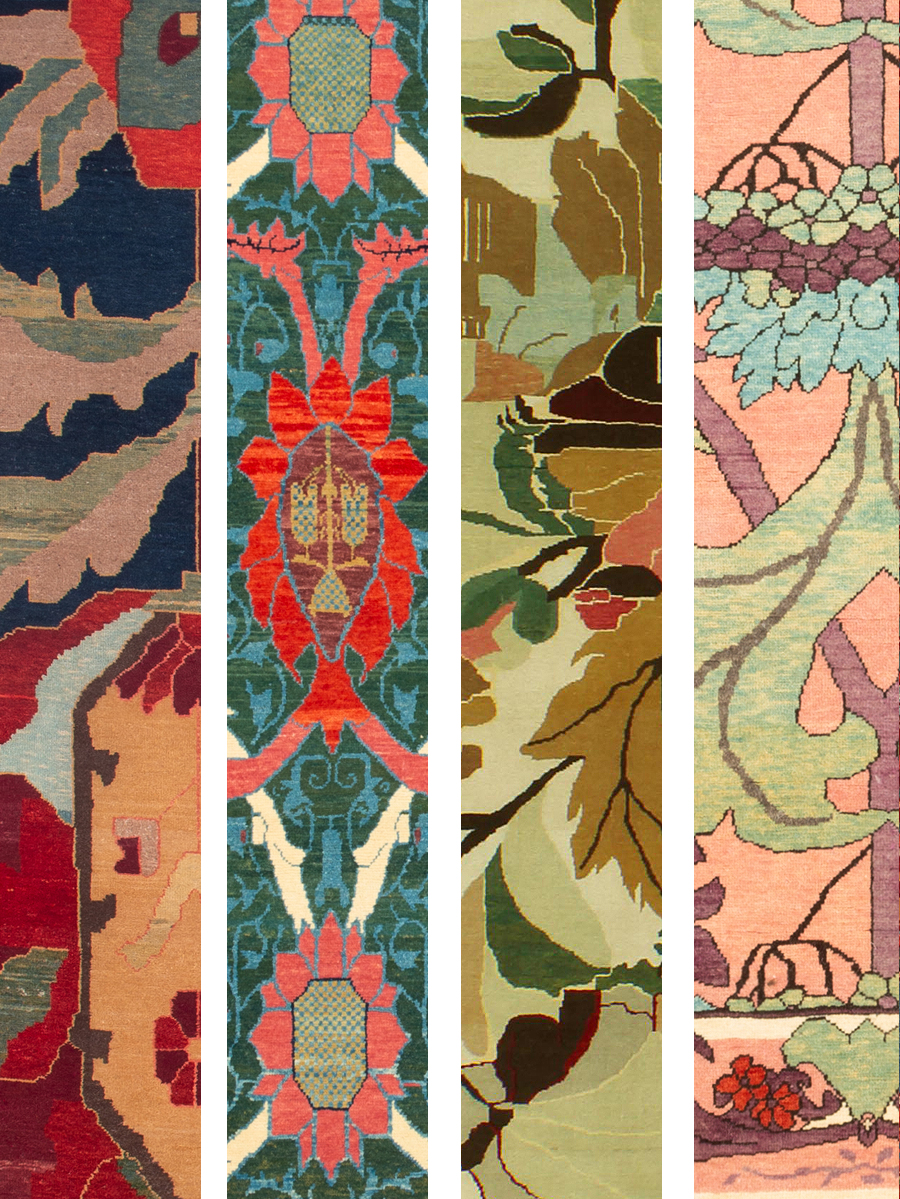 William Morris Patterns
William Morris Patterns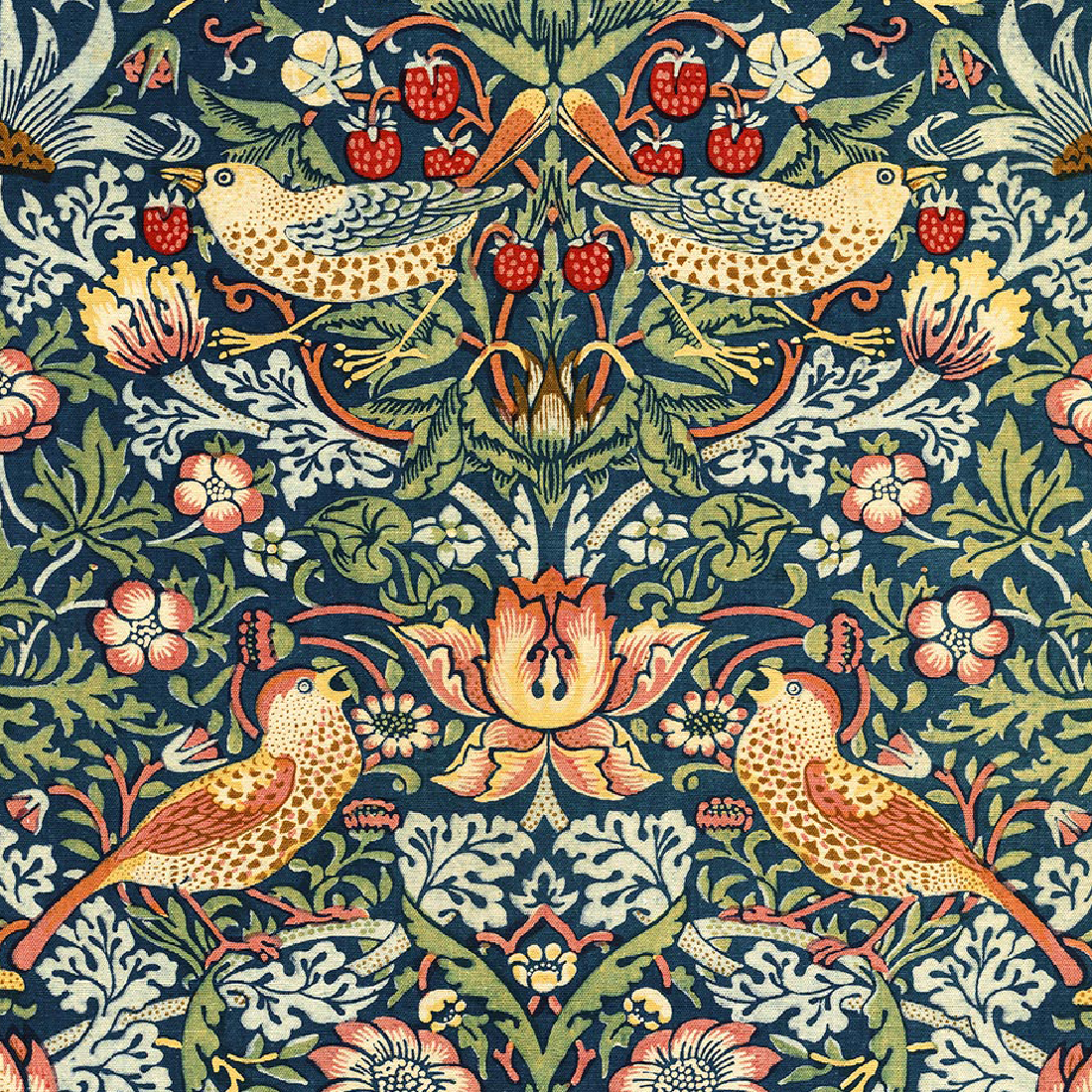 Strawberry Thief, William Morris in 1883
Strawberry Thief, William Morris in 1883In writing about textiles, Morris emphasized the importance of using natural dyes and colors. "These colors in fading remain beautiful," he wrote, "and even after long wear, never pass into nothingness, through that stage of livid ugliness which distinguishes the commercial dyes as nuisances, even more than their short and by no means merry life." As to colors for carpets, he wrote in his essay on textiles, "The soft gradations of tint to which Tapestry lends itself are unfit for Carpet-weaving; beauty and variety of color must be obtained by a harmonious juxtaposition of tints, bounded by judiciously chosen outlines, and the pattern should lie flat on the ground. On the whole, in designing carpets, the method of contrast should be the best one to employ, and blue and red, quite frankly, should be used with white or very light outlines on a dark ground, and black or some very dark, color on a light ground, are the main colors on which the designer should depend."
In the 1880s, in addition to the Hammersmith carpets, Morris created a series of designs for machine-made Axminster and Kidderminster carpets, made at the Wilton factory or Heckmondwike Manufacturing company in Yorkshire. Although Morris believed Persian carpets were the greatest ever made, he adopted the coarser Turkish (Ghiordes) knot for his hand-knotted carpet manufacture. They were woven at a thickness of 25 knots to the square inch.
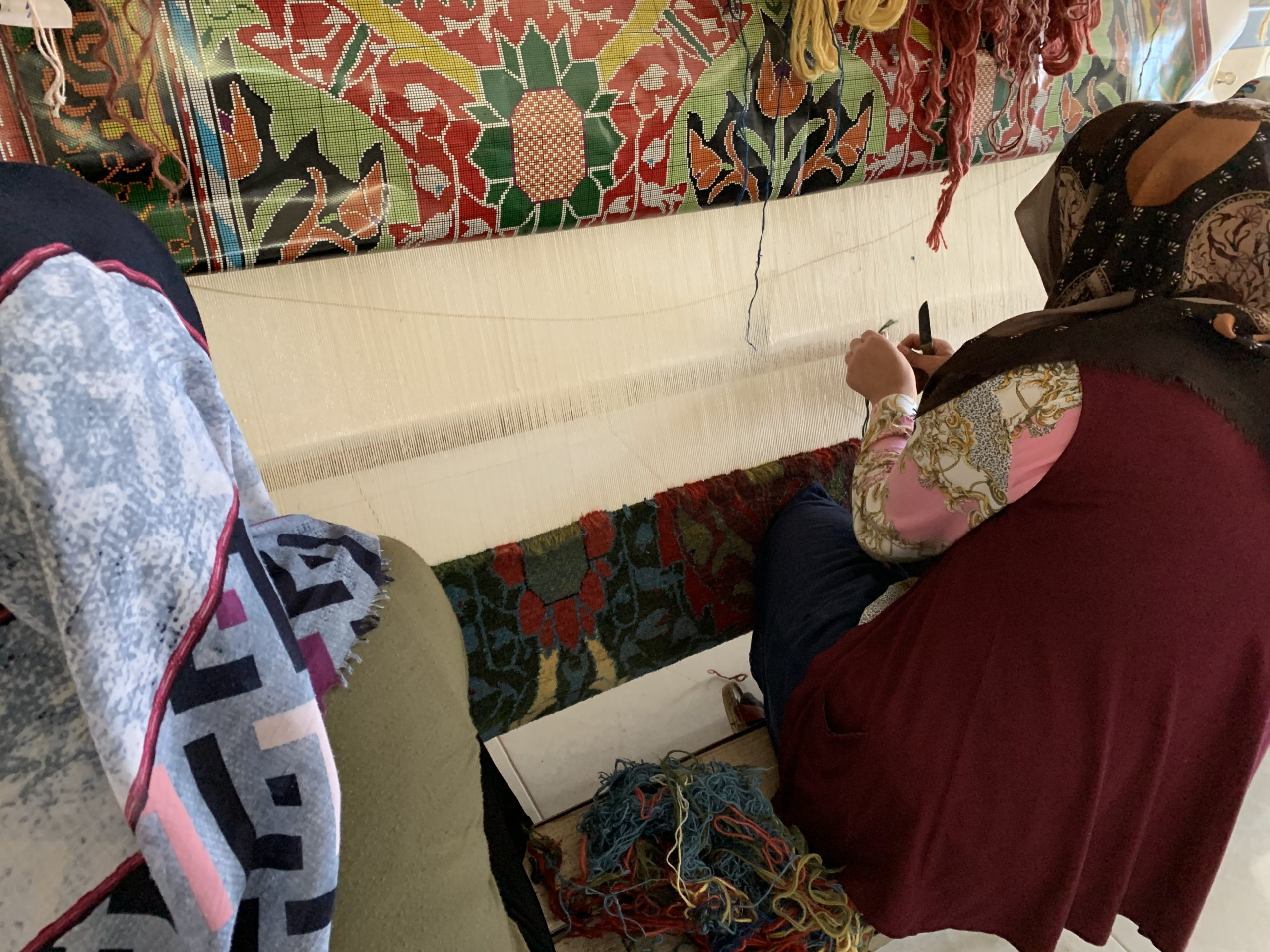 Photo: William Morris Rug Weaving, 2020 Adiyaman
Photo: William Morris Rug Weaving, 2020 Adiyaman
